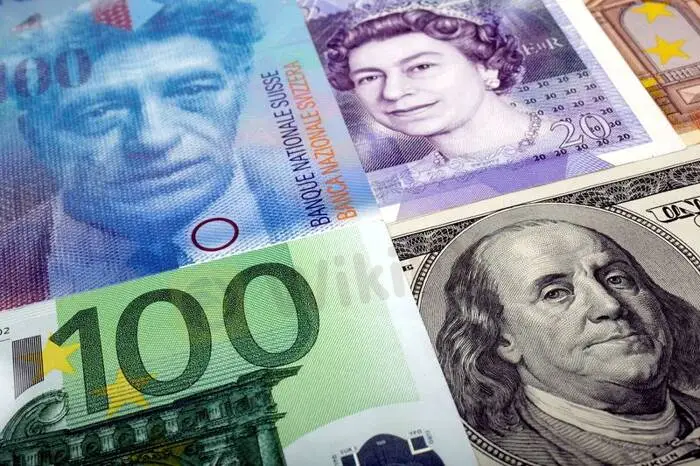简体中文
繁體中文
English
Pусский
日本語
ภาษาไทย
Tiếng Việt
Bahasa Indonesia
Español
हिन्दी
Filippiiniläinen
Français
Deutsch
Português
Türkçe
한국어
العربية
Euro crawls back as market weighs impact of sanctions, invasion
Abstract:The euro was struggling to recover from its plunge the previous day in early Asia trading on Friday, after Russias invasion of Ukraine had hit the common European currency and sent investors scrambling to the safety of the dollar, yen and Swiss franc.

The euro edged up on Friday following Thursday‘s sharp declines in the wake of Russia’s invasion of Ukraine.
The dollar edged lower against most currencies as markets walked back some of the tumultuous moves from the previous day.
Russias rouble also recovered some ground, trading at around 83.5 per dollar, having hit a record low of 89.986 the day before.
“FX markets are slightly calmer this morning as the world tries to come to terms with war in Europe,” Chris Turner, Global Head of Markets at ING, said.
The size and prominence of the sanctions on Russian banks and the size of their FX deposits may take some time to percolate through, he said.
The United States, the European Union and some other countries responded to Russia‘s invasion of Ukraine with a wave of sanctions impeding Russia’s ability to do business in major currencies along with sanctions on banks and state-owned enterprises.
Currency traders were trying to assess the impact on monetary policy around the world.
Policymakers at the European Central Bank (ECB) said the situation in Ukraine could cause the ECB to slow its exit from stimulus measures.
Investors now expect the ECB to increase its benchmark interest rate by 35 basis points by the end of December. Earlier last week, they saw the ECB raising rates by 50 bps by December. [IRPR]
Meanwhile, investors and some U.S. officials said the war would likely slow but not stop approaching interest rate hikes.
James Malcolm Head of UBS FX Strategy said he was surprised how little the euro sold off relative to the European stock market after the attacks, which were currently seen largely as a “European shock”.
“If this does spiral more out of control and becomes a bigger risk-off event globally and affects central bank pricing… any spillover from less Fed (Federal Reserve) pricing is going to affect DOLLAR/YEN certainly more than EURO/SWISS (franc),” he said.
The euro fell to its lowest level in seven years on Thursday versus the safe-haven Swiss franc. The single currency was last 0.1% higher on the day at 1.0373. It was also 0.1% higher against the dollar at $1.1204, having touched its lowest of $1.1106 since May 2020 in the previous session.
The dollar index against a basket of currencies including the euro fell 0.1% on Friday to 96.981, after climbing to its highest level since June 2020.
Bitcoin joined the recovery, up 1.1% to $38,817.

Disclaimer:
The views in this article only represent the author's personal views, and do not constitute investment advice on this platform. This platform does not guarantee the accuracy, completeness and timeliness of the information in the article, and will not be liable for any loss caused by the use of or reliance on the information in the article.
Read more

Blockchain Decentralization: Empowering a Trustless Future
In recent years, blockchain technology has rapidly evolved from a niche innovation behind Bitcoin into a transformative force across industries. At its core, blockchain decentralization refers to the distribution of authority and decision-making away from a central entity and into the hands of a distributed network of participants. This shift redefines how data is stored and verified and paves the way for trustless, transparent, and resilient systems that challenge traditional centralized models.

The president of @Liberland, @Vít Jedlička come on stage, dialogue on trading security.
The 2025 WikiEXPO Hong Kong Station is about to grandly open. the president of @Liberland, @Vít Jedlička come on stage, dialogue on trading security.

Countdown: 1 day.WikiEXPO2025's first stop, Hong Kong, is about to open.
⏰ Countdown: 1 day. WikiEXPO2025's first stop, Hong Kong, is just tomorrow. Focus on transaction security and explore new investment opportunities. ???? Get ready to start now. See you tomorrow.

JustForex vs JustMarkets: A Comprehensive Comparison in 2025
Selecting the right forex broker can make the difference between trading success and frustration for most investors, especially retail investors. As retail traders gain unprecedented access to global markets, the choice between platforms like JustForex and JustMarkets becomes increasingly significant. Both brokers offer some shining features within the forex and CFD trading space, but their approaches differ in some areas.
WikiFX Broker
Latest News
The Withdrawal Trap: How Scam Brokers Lure Victims into Paying More
FCA to Investors: Think Twice Before Trusting These Brokers
Trump\s tariffs: How could they affect the UK and your money
Trump gambles it all on global tariffs he\s wanted for decades
TradingView Brings Live Market Charts to Telegram Users with New Mini App
Trump tariffs: How will India navigate a world on the brink of a trade war?
Interactive Brokers Launches Forecast Contracts in Canada for Market Predictions
Authorities Alert: MAS Impersonation Scam Hits Singapore
Stocks fall again as Trump tariff jitters continue
IG Group Acquires Freetrade for £160M to Expand UK Investment Market
Currency Calculator







